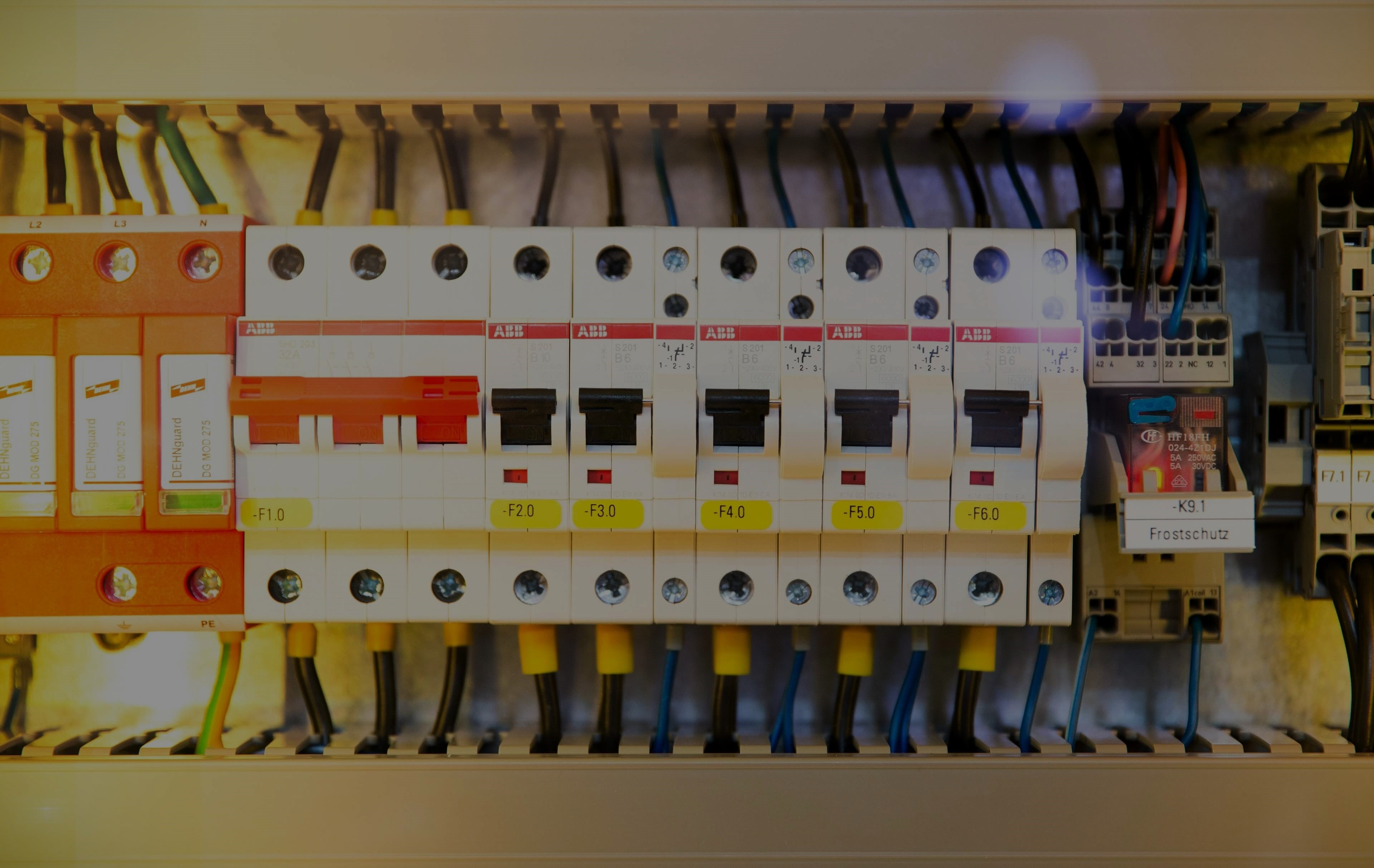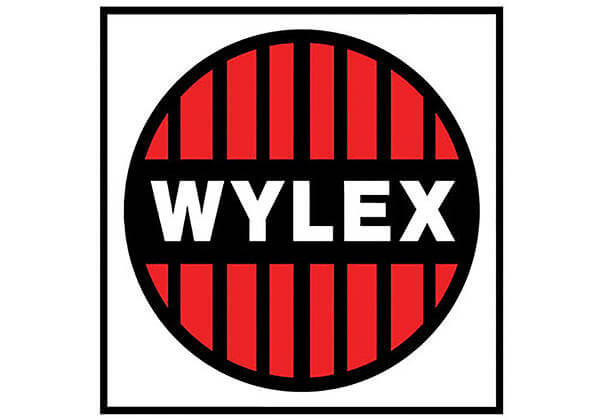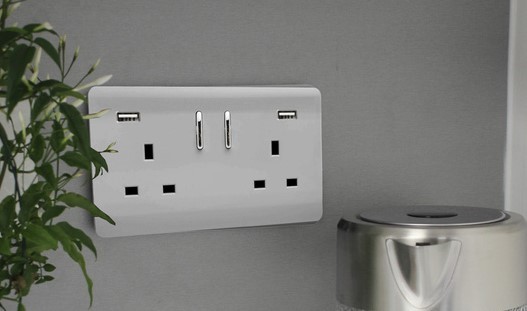Circuit protection is purposely adding a weak link in an electrical circuit which breaks if there is a fault, protecting the circuit from damage and from causing electrical shocks.
Faults can include high temperature, excessive current, or a conductor short circuiting, which can happen if there is a faulty appliance, too many appliances connected to the circuit, or if a conductor comes into contact with another conductive element.
In residential and small-scale properties, all circuits will run through a consumer unit with circuit breakers and devices, and a main kill switch to control the power to the whole home. In commercial properties, a similar device called a distribution board controls the power, but these can cope with much higher power.
Consumer Units Explained
A consumer unit is used to protect electrical appliances from getting damaged, and prevents them from causing electric shocks. Consumer units are made up of the enclosure or box which houses all the other components, circuit breakers which are the protective components, and a main switch to control power to all other circuit breakers.
Consumer units also have a neutral bar to terminate all the return wires, an earth bar which earths all the cables, a din rail which simply mounts all the circuit breakers and devices, and a bus bar which connects the circuit devices to the isolation devices. A bus bar is cut to size by an electrician and is plugged into all the devices. A consumer unit may also have blanks, which are plastic clips that attach to the din rail in the same way as circuit breakers and devices, and allow for future changes to the circuit.
Distribution boards are similar, but are more commonly used in commercial environments that need much higher power. These have a three-phase incoming electrical supply, while consumer units have a single-phase incoming supply.

Types of Circuit Protection
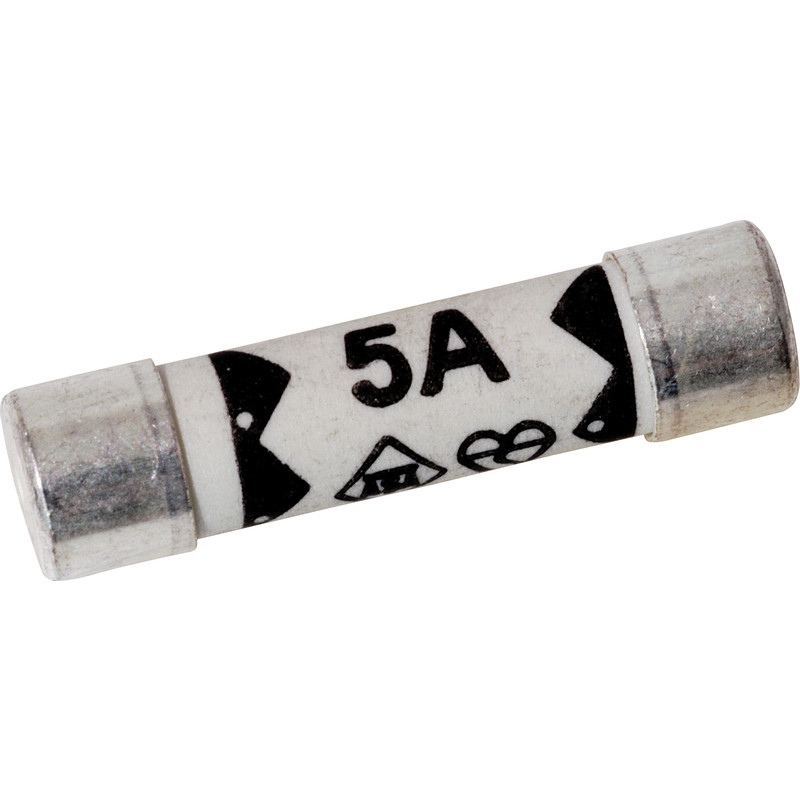
Fuses
Fuses are a type of single-use circuit breaker, often found in household appliance plugs – once blown, they must be replaced. They’re small devices with a thin metal strip inside called a resistor – made of tinned copper – which melts when there’s a fault. You’ll find 3 amp, 5 amp and 13 amp fuses which must be compatible with the current for your device. Generally, appliances up to 700W use 3A fuses, while 13A fuses are for 700W appliances and greater. A fuse speed rating tells you how fast the fuse will blow in the event of a fault – the faster the speed, the safer the fuse. A voltage drop rating indicates how much voltage is absorbed into the fuse – the higher the amp, the greater the voltage drop.
Fuses are effective and inexpensive, and can be replaced quickly and easily, including by a DIYer with little electrical knowledge. Simply choose the same fuse that was already in the plug. Fuses are colour-coded for easier identification – pink for 3A, brown for 13A, and black for 5A.
The main consideration with a fuse is that they’re only suitable for use with appliances that are plugged in, rather than hardwired in.
Advantages
-
Effective
-
Inexpensive
-
Easy to replace and install
Things to Consider
-
Only used for appliances that are plugged in
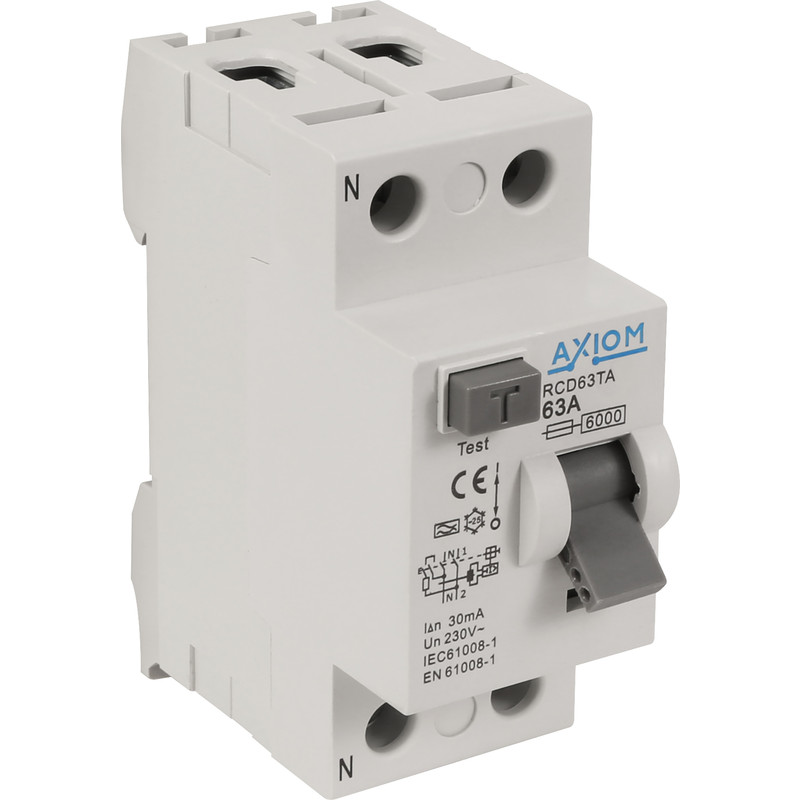
Residual Current Circuit Breakers
RCCBs are residual current circuit breakers, and are found in consumer units. They mainly protect against electric shocks and fires by measuring the outgoing current against the incoming current. If the current is different, there is ‘earth leakage’ which means some electricity is being lost somewhere and potentially causing – or could cause – an electric shock. RCCBs have a range of amp ratings, phases and curve types suited to different uses.
RCCBs, unlike MCBs, are specifically designed to protect users from electric shock. For this reason, RCCBs are a valuable component of a consumer unit and shouldn’t be forgotten in residential or commercial applications. Also, RCCBs can protect up to 5 circuits with one device.
However, RCCBs cannot protect against overloading or short-circuiting on their own – they need an MCB to assist, or should be replaced with an RCBO.
Advantages
-
Specially designed to protect against electric shock
-
Variety of types, amps, phases and curve types available
-
Can protect up to 5 circuits with one device
Things to Consider
-
Cannot protect against overloading or short circuiting
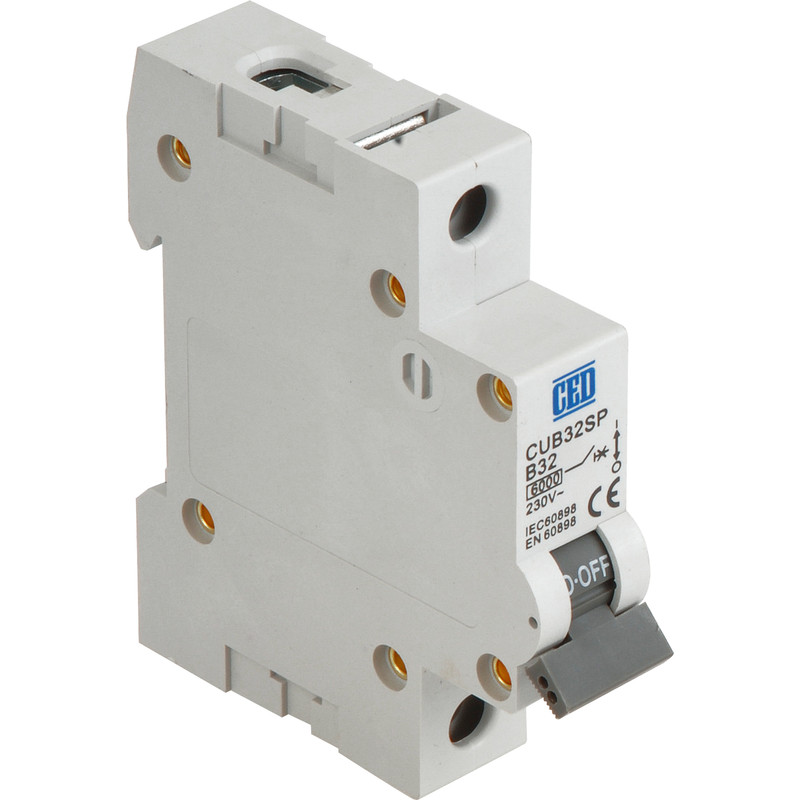
Miniature Circuit Breakers
Miniature circuit breakers, also known as MCBs, are designed to prevent damage caused by a short-circuit or overloading current, and are commonly found in consumer units. Similar to fuses, a metallic strip deflects when the current is too high which releases a latch that stops the current flow. Different MCB types trip at different rates – type B when the overload is 3-to-5 times its load current, type C between 5-to-10 times its load current, and type D between 10-and-20 times its load current. Type D is better suited for industrial use where there are high inductive loads.
There are also a range of amp ratings which make MCBs perfect for different situations. 6A to 50A MCBs are used in domestic environments, while higher amp ratings are better for commercial and industrial electrical circuits.
The main consideration with MCBs is that they do not protect against earth faults – where a conductor comes in contact with the earth and could be causing an electric shock. They are best used alongside RCDs which can offer this protection.
Advantages
-
Wide range of types for domestic, commercial and industrial situations
-
Range of amp ratings for different appliances and applications
Things to Consider
-
Not specifically designed to protect against earth faults
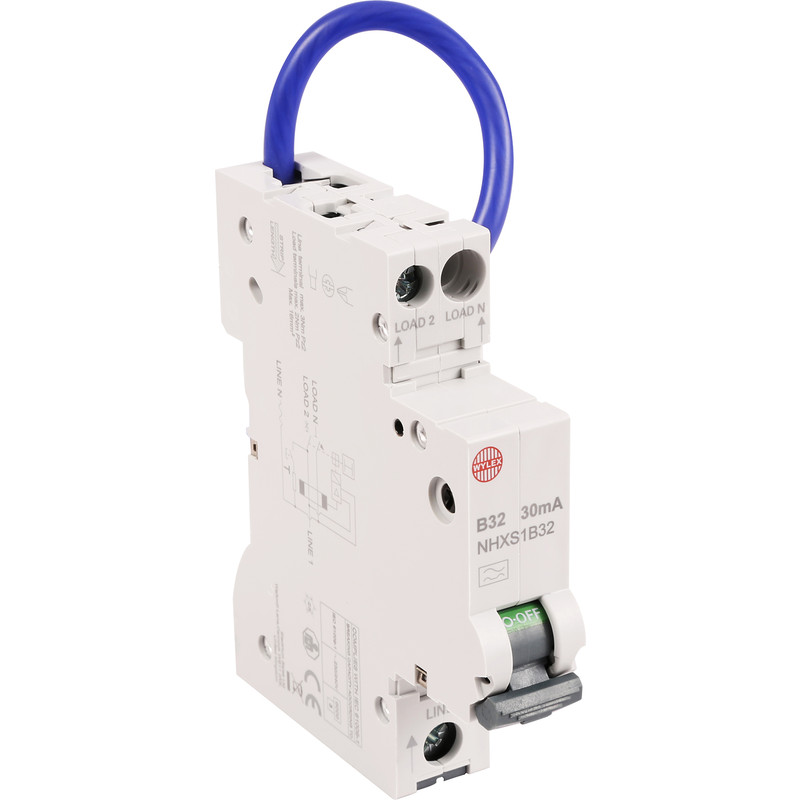
Residual Current Breakers with Overcurrent
RCBOs are a type of device found in a consumer unit that keeps an eye on current going around the circuit to provide protection against electric shock, and also protect an appliance from overload. Essentially, they combine the benefits of MCBs and RCCBs. They can trip when there is an imbalance of current going in and out of the circuit to protect against electric shock, and a metallic strip will deflect in the case of an overload or short-circuit to protect the appliance.
Similar to RCCBs, there are a range of amp ratings and types to choose from so RCBOs can be compatible for a range of circuits and applications. However, unlike RCCBs, they’re used for just one circuit, meaning they won’t cut the power to a larger number of appliances when just one has an issue.
However, RCBOs have a higher price tag than RCCBs and MCBs and you’ll need a separate device for every circuit you wish to protect in this way.
Advantages
-
Range of amp ratings and types for a number of applications
-
Won’t cut the power to more than one circuit
Things to Consider
-
Higher price tag than RCCBs and MCBs
-
Only protect one circuit per device

Isolator Switches
Isolator switches are used to isolate one section of a circuit in case of repairs, servicing and maintenance. They are usually used if there is a higher risk of electric shock, such as in high voltage circuits, and can be used alongside circuit breakers as a second layer of protection from electric shocks when carrying out maintenance. Isolator switches can be found in a range of environments from domestic properties for electric showers, extractor fans and air conditioners, to industrial power grids.
The main advantage of an isolator switch is that they provide an extra level of protection against electric shocks. They also allow you to cut power to only one small section rather than the entire circuit which can reduce downtime.
Isolator switches, whilst beneficial, are an extra cost to consider when setting up or altering an electrical circuit.
Advantages
-
Extra level of protection
-
Allow you to cut power to one section rather than the full circuit
Things to Consider
-
Extra cost to consider when installing a circuit
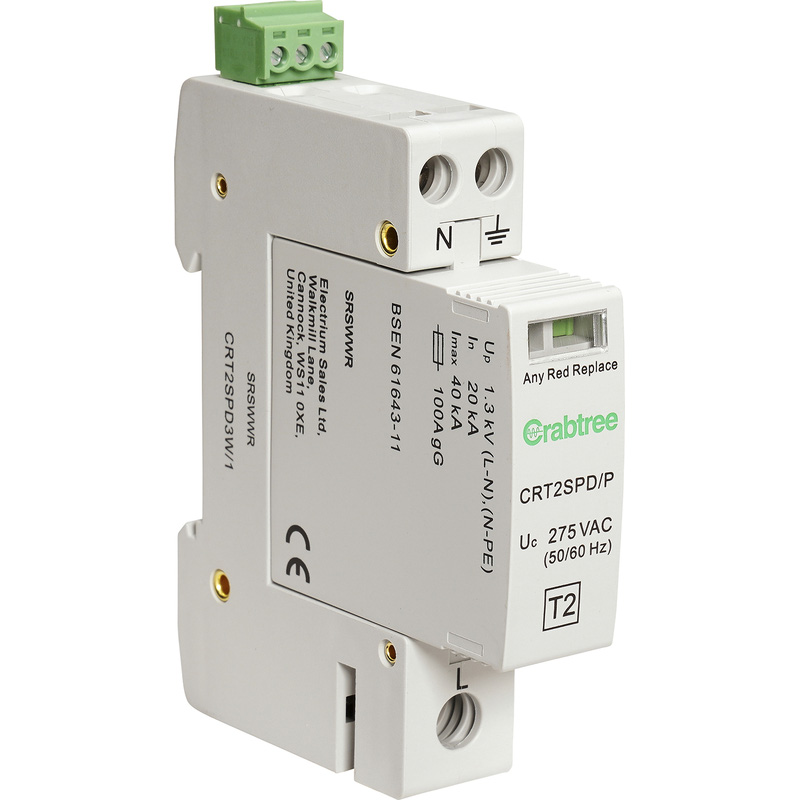
Surge Protectors
Surge protectors, also known as SPDs, are devices that protect equipment from voltage spikes – caused by electrical faults or lightning strikes – which can damage appliances. You’ll find surge protectors available on their own or already built into an appliance or power distribution board. They work by blocking or diverting excess power to the ground when the voltage increases beyond safe levels.
You’ll find surge protectors fitted with warning lights which can let you know if there is a problem, as well as indicate that they’re working correctly.
The main consideration with surge protectors is that they may have voltage limitations and wont work correctly if the voltage is too high. You should also consider how often power surges occur or are likely to occur, as this means you might need a more powerful model.
Advantages
-
Protect against faults and lightning strikes
-
Warning lights keep you informed of their status
Things to Consider
-
May have voltage limitations that can reduce their effectiveness
Key Circuit Protection Features
Amp Rating
Amp rating essentially refers to the strength rating for fuses and circuit breakers. It's the amount of electrical current a fuse can handle. It is also referred to as the current-carrying capacity or amperage rating. Check out the National Electrical Code rules when choosing the right fuse or circuit breaker for a circuit.
Populated or Unpopulated
Consumer units come in two types: populated or unpopulated. In populated units, circuit protection devices are already installed for easy circuit building, whereas unpopulated units are empty. This provides greater flexibility to tailor the consumer unit to your specific requirements.
Ways and Modules
Consumer units are available in a number of sizes for different circuits and components, so you can choose the right one for the situation. These distinctions are referred to as 'ways' and ‘modules’. The term 'ways' means the number of circuits that can be configured within the consumer unit, while 'modules' refers to the available spaces for components. Each component usually uses either one or two spaces. A main switch, RCCB, and SDP each need 2 modules, whereas MCBs and RCBOs use one each.
Consumer Unit Regulations
Consumer units are regulated by the 18th edition consumer unit regulations which control the design, installation and certification of all electrical circuits which have to adhere to the latest update (BS 7671:2018 + A2:2022). The regulations state that all electrical circuits must be protected from overload, current leakage, fire and overheating. For more information refer to BS 7671 - 18th Edition.

